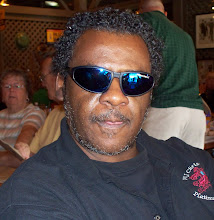Now that you have developed a feel for the pawn game, it's time to add the King and Queen. Set up the rest of the pieces as I've described their proper setup before.
The "Queen always gets her color" is one way I convey to my students where to place the Queen. What this means is if the Queen is white, she stands on a light square. If the Queen is black, she stands on a dark square when the pieces are set up. That leaves a lone square for the King, and this means he will always start the game on a square that is opposite color of his hue. This is the starting position for the beginning of the end of The Pawn Game. We no longer play to get a pawn to the other side of the board anymore; now we play a game I call Take The King.
In Take The King, you must take or kill the other person's king to win the game. The movement of the King is simple: he can move one square at a time in any direction on a empty board. However, in his current position, he can't move at all because he is surrounded by other pieces. His movements are slow and plodding, and must be kept safe and away from the enemy or the game could be lot! The King is the deciding factor in the game at this point, so he is the most important piece on the board. Therefore, we say his value is the whole game itself.
The Queen is the strongest piece on the chess board, is usually the most aggressive piece on the board and is the most effective if used properly. Her value is nine points. I like to describe her movement to new students as such: She moves like a Rook and a Bishop combined. In other words, she has the power of both the Rook and Bishop. She can move across an empty board from one end to the other in one movement just like a Rook or Bishop!
So go at it now kiddies of all ages. Take The King!! Remember, the first move is still the same for both sides. Chess On !!
The "Queen always gets her color" is one way I convey to my students where to place the Queen. What this means is if the Queen is white, she stands on a light square. If the Queen is black, she stands on a dark square when the pieces are set up. That leaves a lone square for the King, and this means he will always start the game on a square that is opposite color of his hue. This is the starting position for the beginning of the end of The Pawn Game. We no longer play to get a pawn to the other side of the board anymore; now we play a game I call Take The King.
In Take The King, you must take or kill the other person's king to win the game. The movement of the King is simple: he can move one square at a time in any direction on a empty board. However, in his current position, he can't move at all because he is surrounded by other pieces. His movements are slow and plodding, and must be kept safe and away from the enemy or the game could be lot! The King is the deciding factor in the game at this point, so he is the most important piece on the board. Therefore, we say his value is the whole game itself.
The Queen is the strongest piece on the chess board, is usually the most aggressive piece on the board and is the most effective if used properly. Her value is nine points. I like to describe her movement to new students as such: She moves like a Rook and a Bishop combined. In other words, she has the power of both the Rook and Bishop. She can move across an empty board from one end to the other in one movement just like a Rook or Bishop!
So go at it now kiddies of all ages. Take The King!! Remember, the first move is still the same for both sides. Chess On !!

